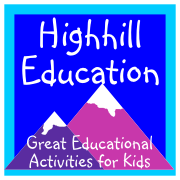This past year we studied the “first half” of United States History using my own literature-and-library-book based plans. We started at the beginning with Native Americans, and I originally thought we would only study up until 1850, or just before the Civil War.
As the year went on, I saw that I had over-estimated how long some of the units were going  to take, and we also were able to get a nice early start on our history studies last year (starting in July). After we completed my original plans through 1850, we did a unit on Slavery and the Underground Railroad and a unit on the Civil War (I never managed to write blog posts about those units though…maybe I should still go back and do that!).
to take, and we also were able to get a nice early start on our history studies last year (starting in July). After we completed my original plans through 1850, we did a unit on Slavery and the Underground Railroad and a unit on the Civil War (I never managed to write blog posts about those units though…maybe I should still go back and do that!).
We’re going to finish our US History studies this year, starting with the post Civil War Reconstruction era, and making our way up to the present, or at least somewhat recent events. I realized the other day that events I remember (like the political changes in Eastern Europe in the 1990s and the terrorist attacks of 9/11) are history for my kids!
I’m still making my own book-based plans for read-aloud literature, read-alone lit for Miss M, and a “book basket” of picture book and short non-fiction selections for Miss M to read alone or me to read to the boys.
I’m also adding in at least one “History Through the Ages: Time Travelers” study for Miss M. I’ve already purchased the Industrial Revolution through the Great Depression title. There’s one more on WWII, then if all is going well, we also might use the 20th Century Lap-Pak. That title has only the lapbook component, and not the short readings and other projects that come along with the Time Travelers…but it would give us some written component to take us to the present day.
I’m excited to have the short reading sections form a bit of a spine for Miss M, since I don’t have another spine text in mind. I’m also hoping that since the lapbook pieces and other projects are assigned lesson-by-lesson, it will help us stay on track with having some written aspect to our history studies (something we failed to do last year).
I’m still refining my reading lists (and I may not get them all done before the school year starts), but here is my overall plan for the year…subject to change, of course, if some time periods take more or less time to cover than I am expecting!
| Unit: | # Weeks | Lessons from HTTA Time Travelers | Approximate Dates |
| 1865 – 1899 | 7 | Lessons 1-10, except 6 | Sept 3 – Oct 18 |
| 1900 – 1914 | 5 | Lessons 6 & 11 through 16 | Oct 21 – Nov 22 |
| World War I | 3 | 17-18 | Dec 2 – Dec 20 |
| 1920s | 2 | 19 – 20 | Jan 6 – 17 |
| 1930s (Great Depression) | 2 | 21-25 | Jan 20 – 31 |
| WWII/1940s | 6 | WWII study — all | Feb 3 – Mar 21 (incl. a winter break) |
| 1950s-1970s | 4 | 20th Century Lap-Pak | March 24 – April 18 |
| 1980s to Present | 3 | 20th Century Lap-Pak | April 21 – May 9 |
I’m hoping to find the time to post by book lists and unit wrap-ups throughout the year!
Linking up with…Curriculum Planning at Highhill Education and History/Geography Link-Up at All Things Beautiful!














